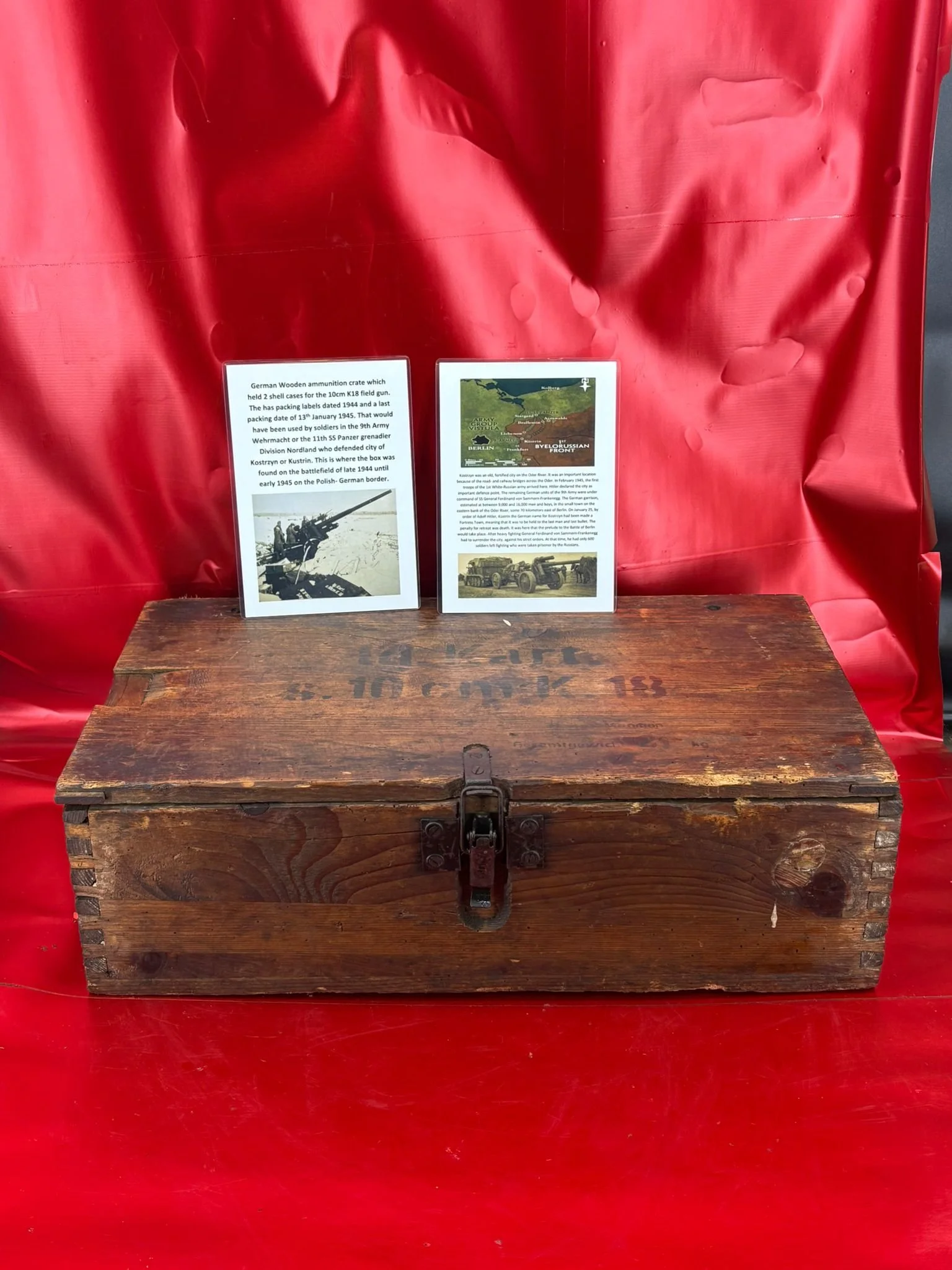 Image 1 of 12
Image 1 of 12

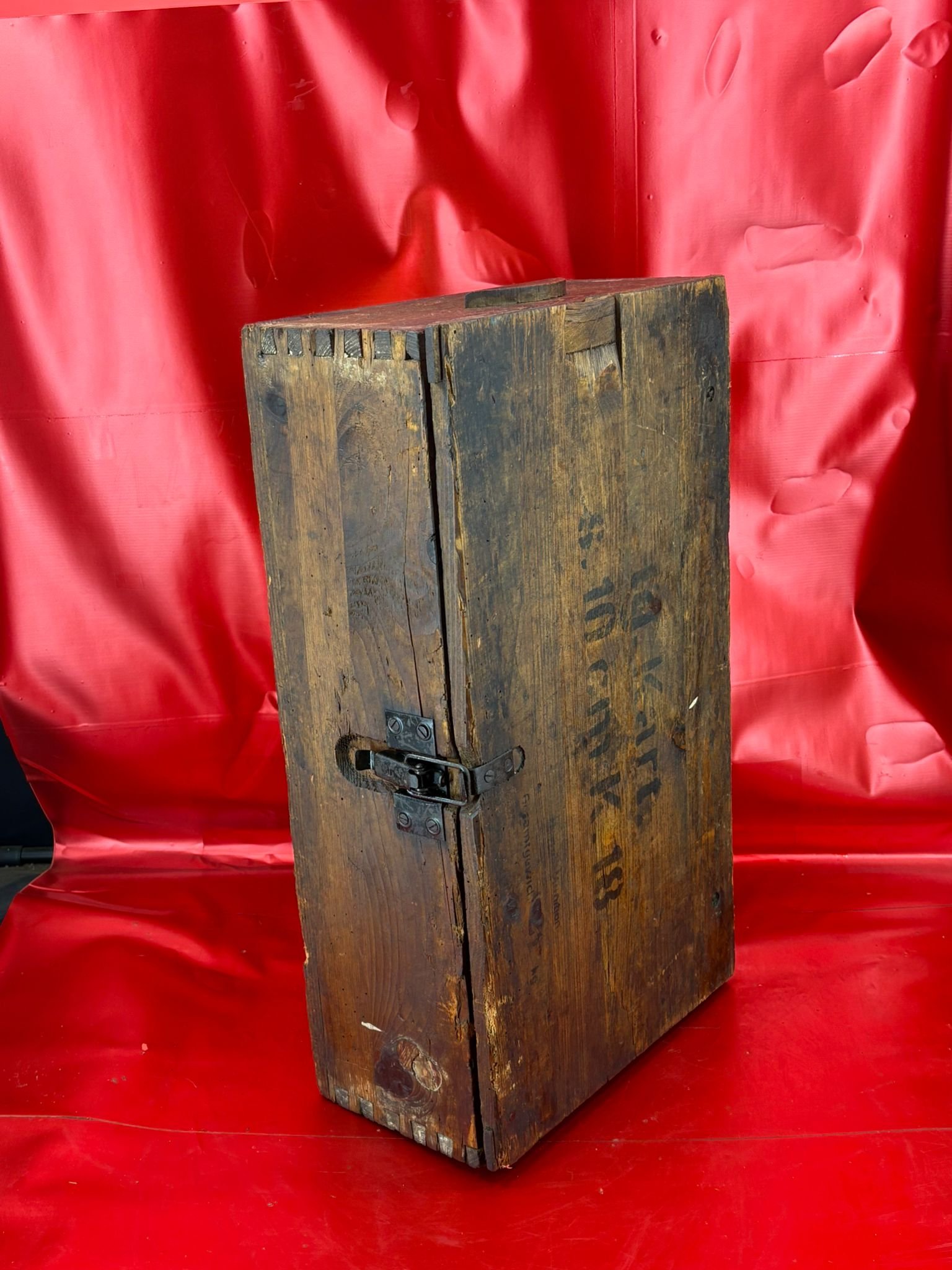 Image 2 of 12
Image 2 of 12

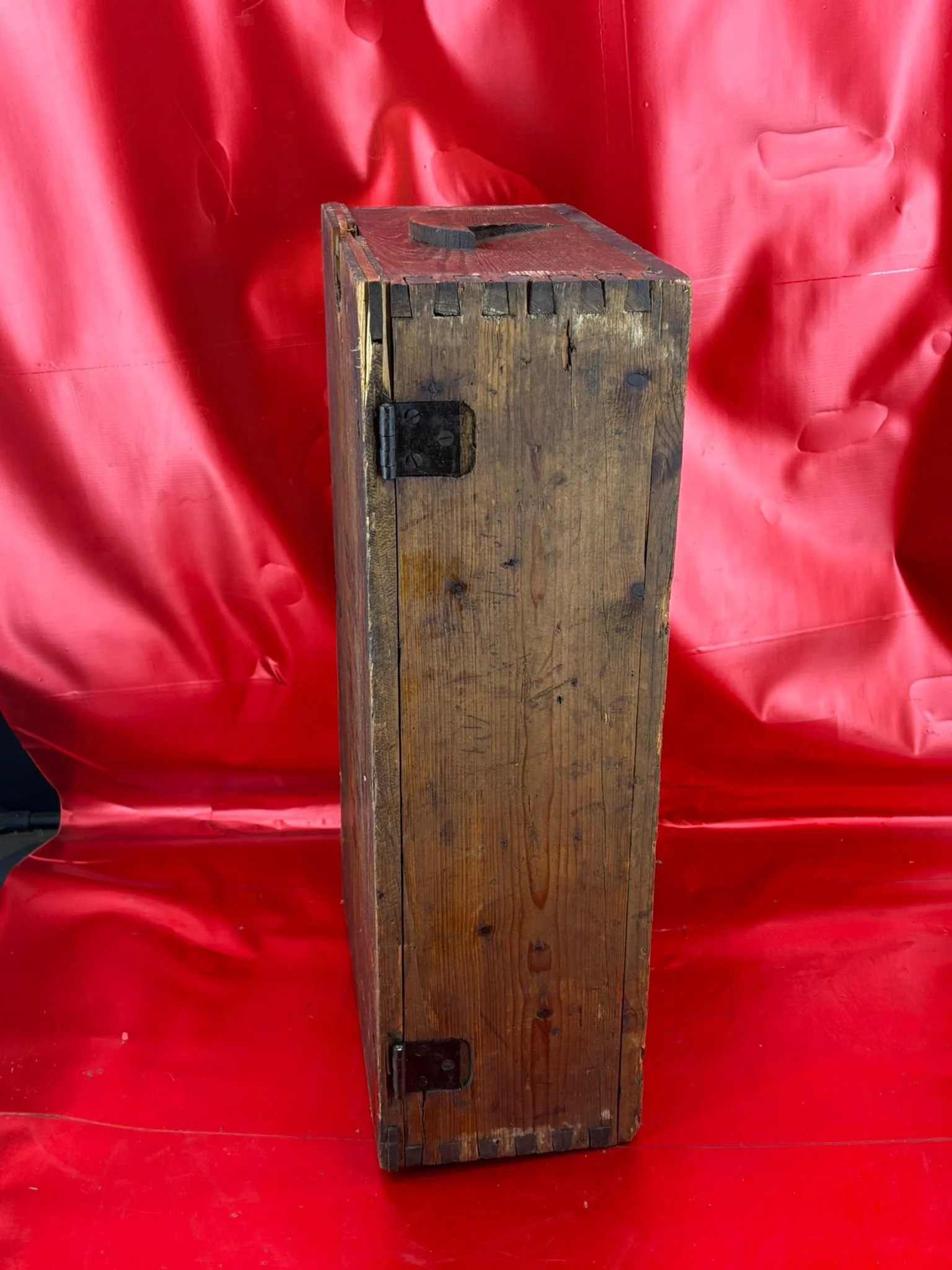 Image 3 of 12
Image 3 of 12

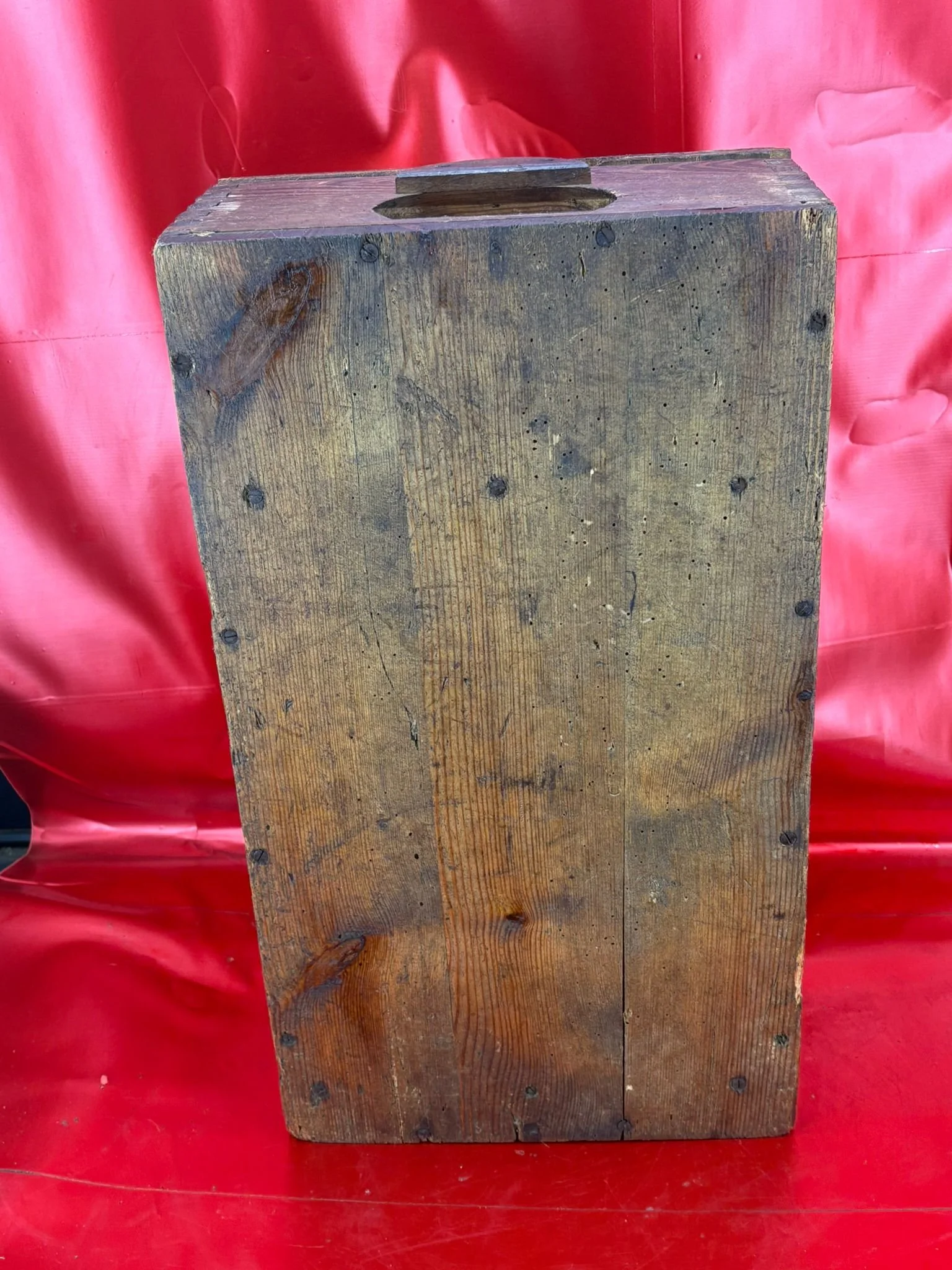 Image 4 of 12
Image 4 of 12

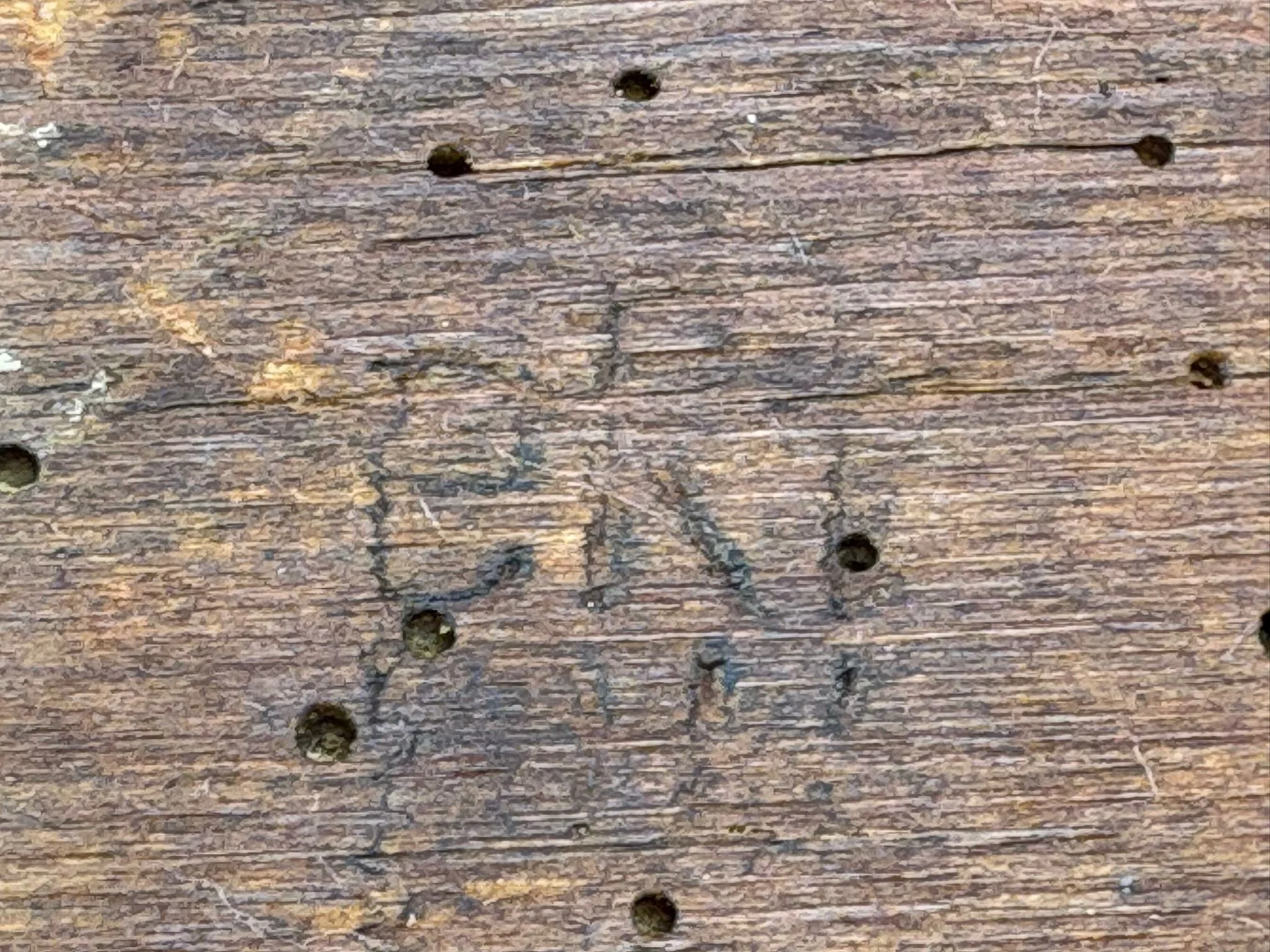 Image 5 of 12
Image 5 of 12

 Image 6 of 12
Image 6 of 12

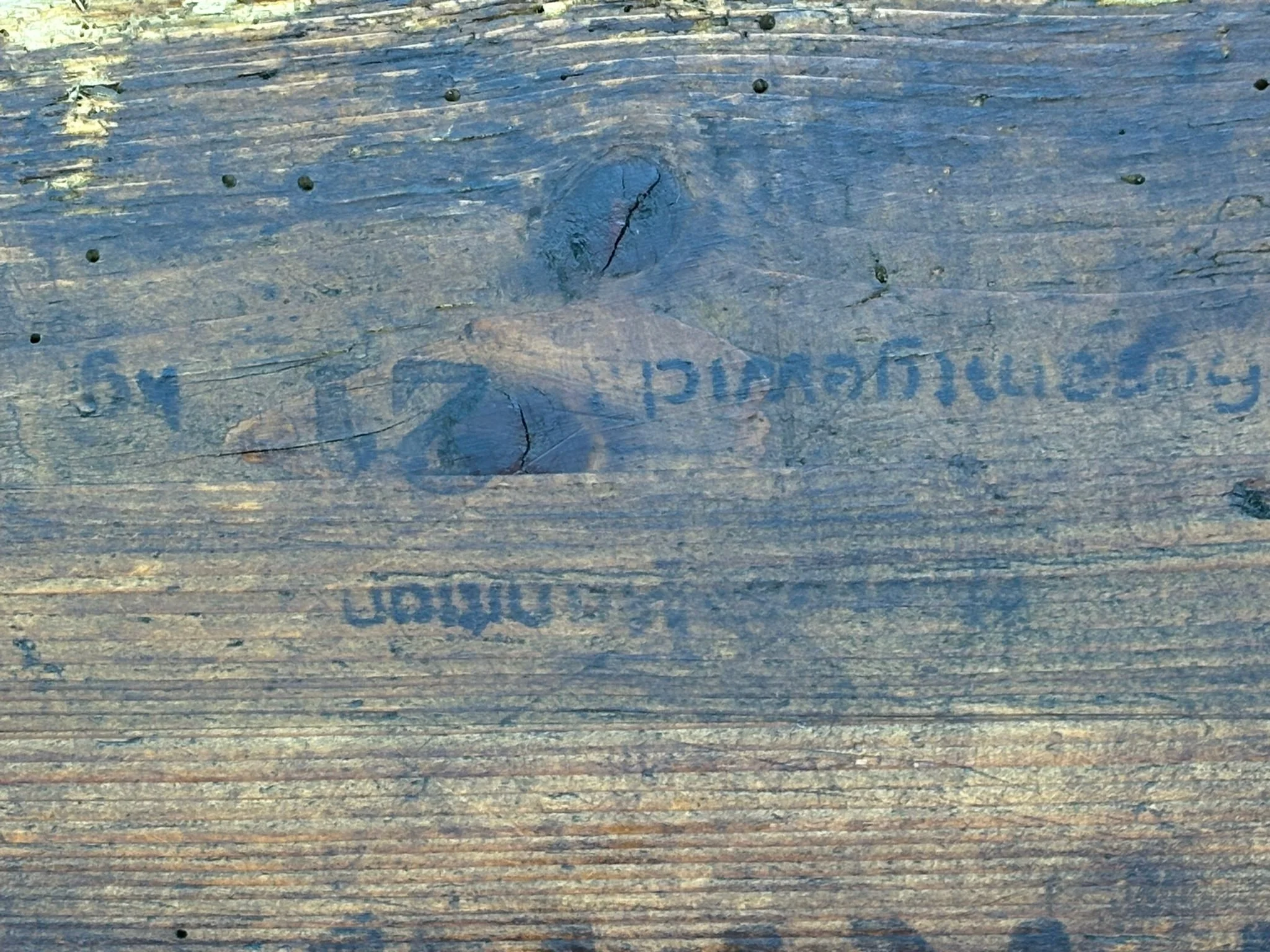 Image 7 of 12
Image 7 of 12

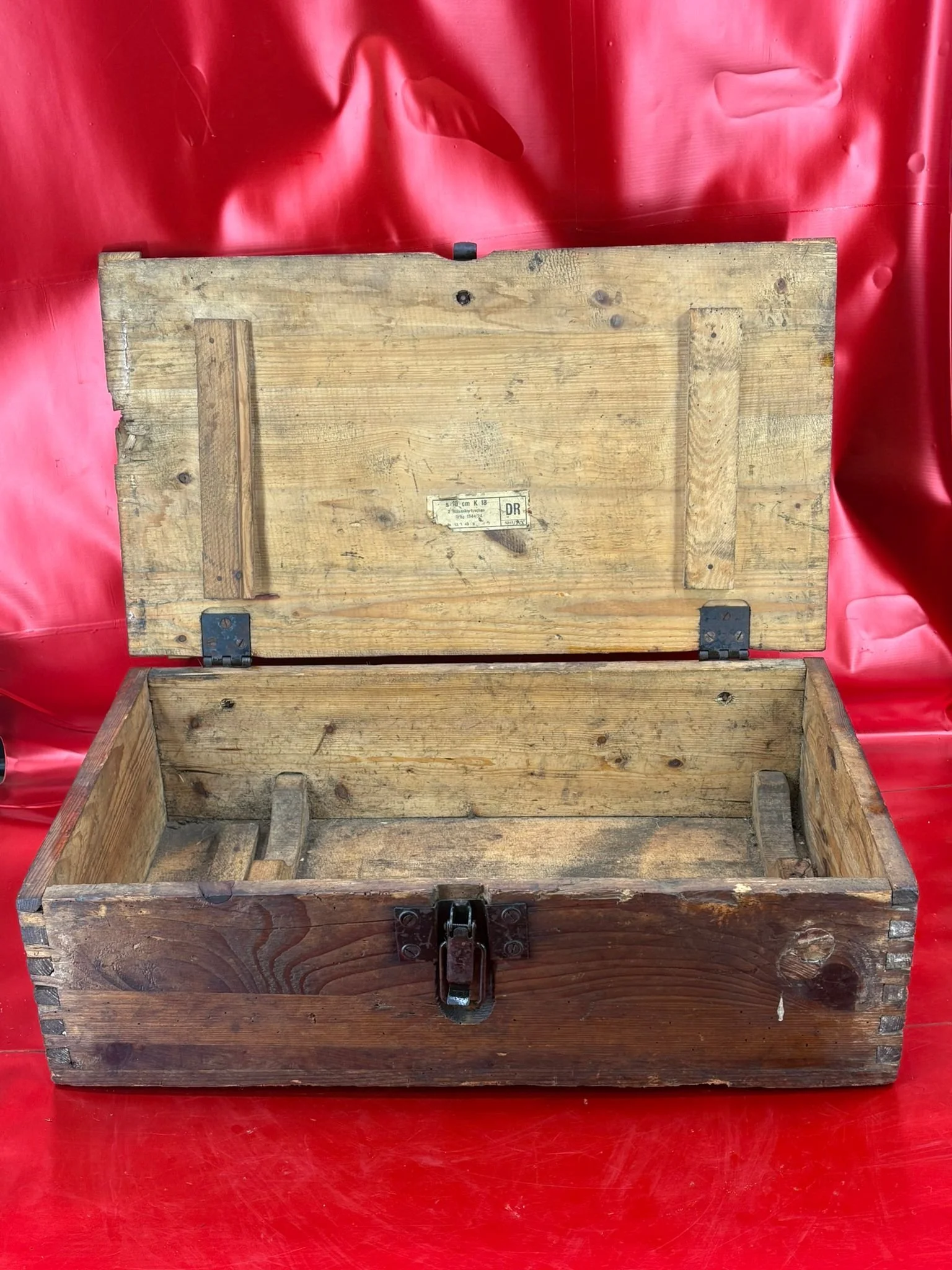 Image 8 of 12
Image 8 of 12

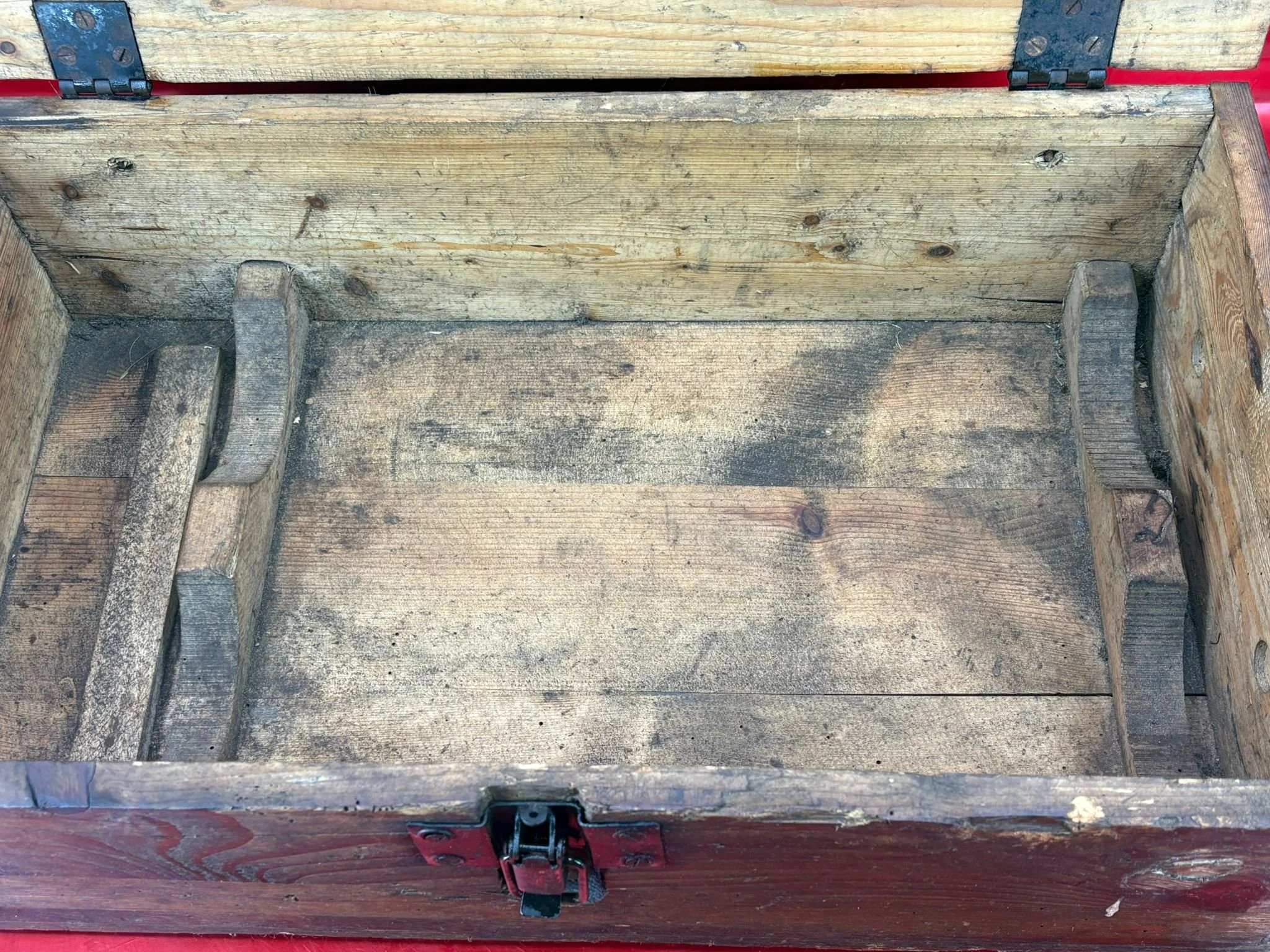 Image 9 of 12
Image 9 of 12

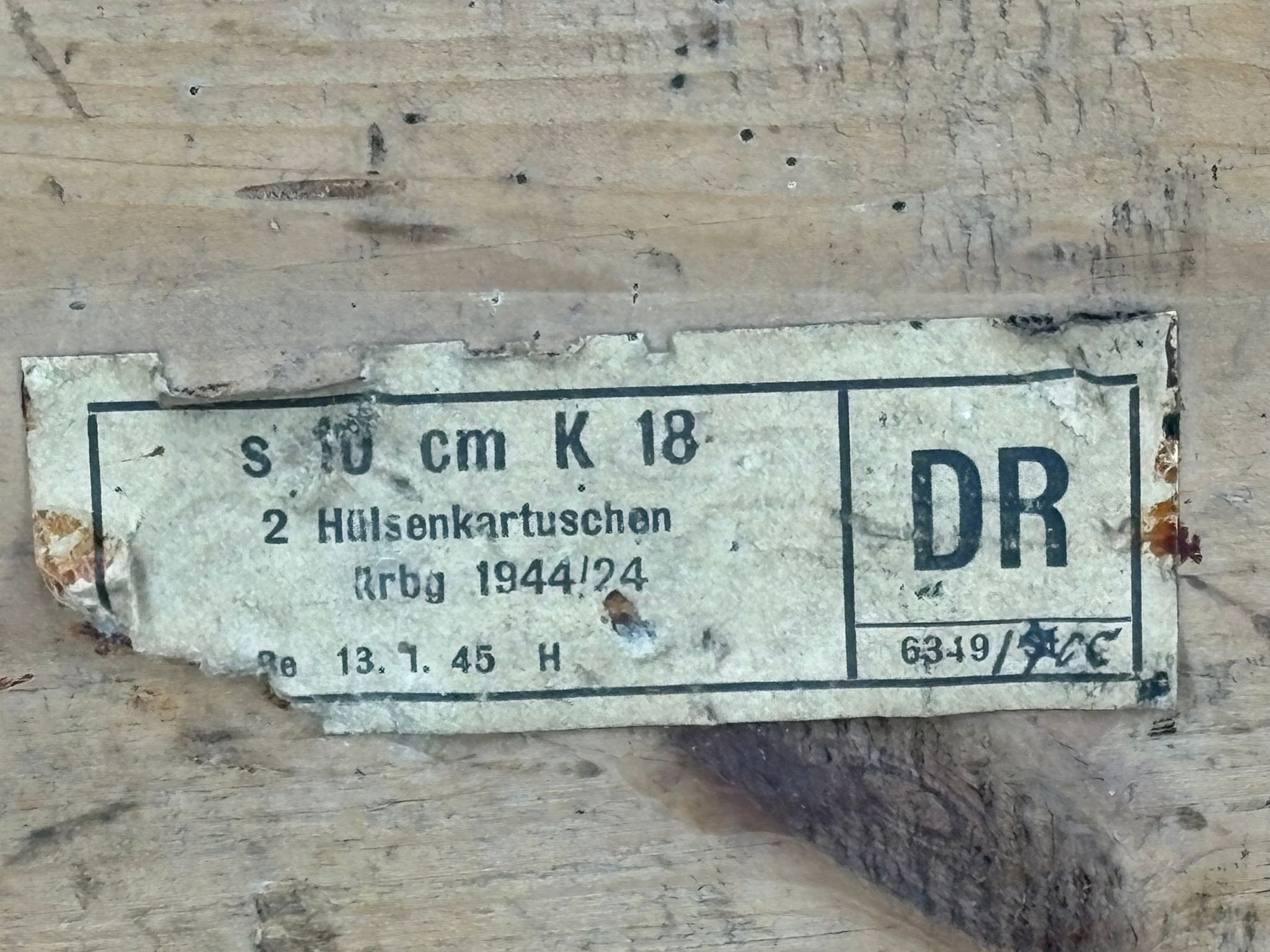 Image 10 of 12
Image 10 of 12

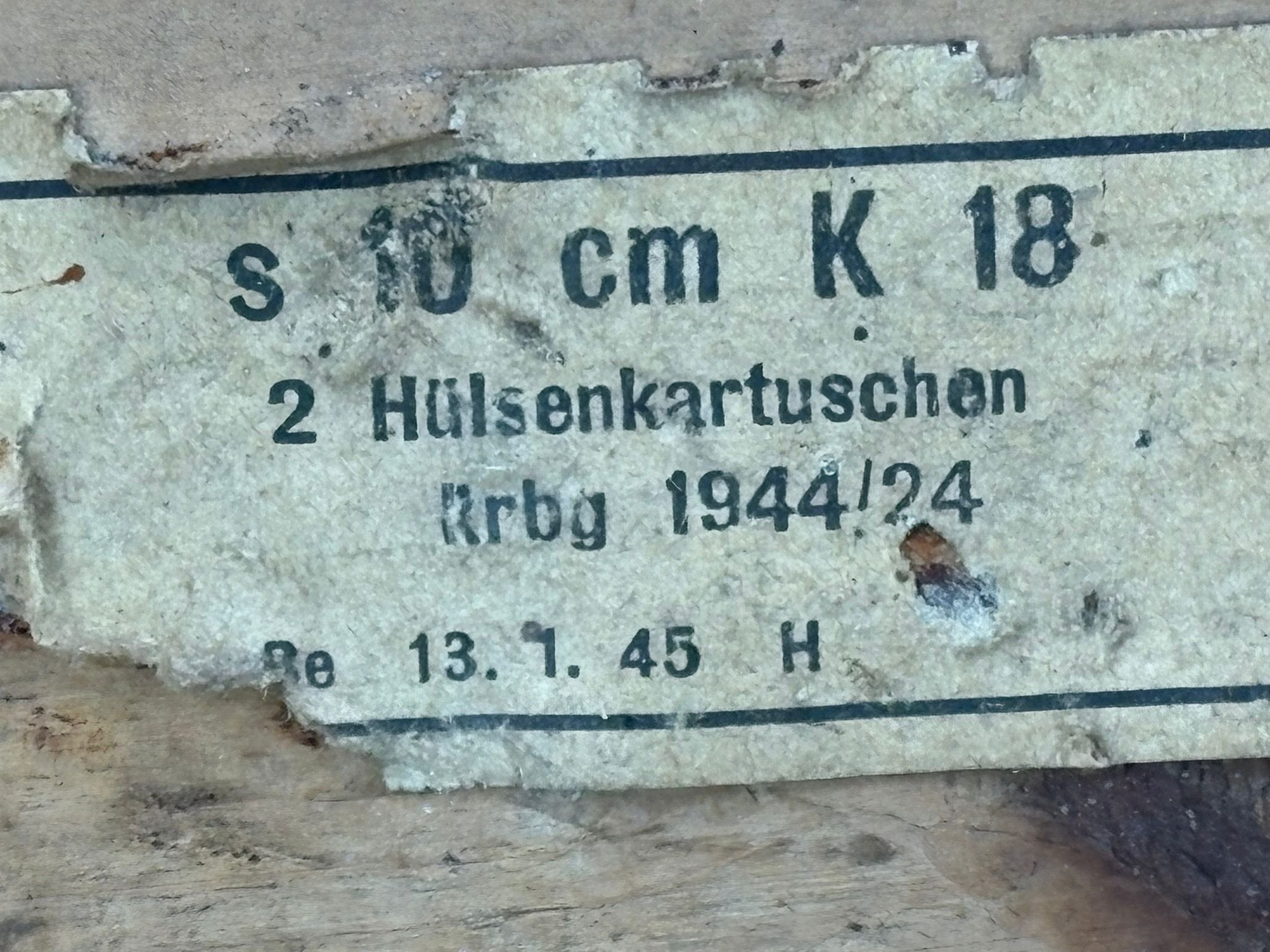 Image 11 of 12
Image 11 of 12

 Image 12 of 12
Image 12 of 12













German Wooden ammunition crate,complete racking, held 2 shell cases for 10cm K18 field gun+packing labels dated 1944, last packing date 13th January 1945 found in Kustrin on Polish border 1945 battle
This is a rare to find complete and very late totally rare 1945 dated German wooden crate which held 2 shell cases for 10cm K18 field gun. The crate is in very nice condition, with the wood still retaining most of its original brown stain, though it shows some dirt, discoloration, and minor damage. The crate remains solid, not breaking up or falling apart. It has some light woodworm but nothing bad and has been treated and the box is well preserved and a nice size at 22 inches long by 13 inches wide. It is maker marked on the lid in black ink and embossed on the side maker mark and on the inside it has its paper maker label dated 1944 and a last packing date of 13th January 1945 all perfectly readable markings. Both hinges are intact and in good condition; both locks still work fine and the lid opens and closes without issue.The box still has both its wooden carry handles are also present. Inside, is its complete original racking which is very rare to find there are some knocks and marks from use, but nothing significant. This is a fine and rare example of this ammunition crate which is perfect for display or any collection. The crate would have been used by soldiers in the 9th Army Wehrmacht or the 11th SS Panzer grenadier Division Nordland who defended city of Kostrzyn or Kustrin. This is where the box was found on the battlefield of late 1944 until early 1945 on the Polish- German border.The crate comes with 2x A5 laminated information cards.
Kostrzyn was an old, fortified city on the Oder River. It was an important location because of the road- and railway bridges across the Oder. In February 1945, the first troops of the 1st White-Russian army arrived here. Hitler declared the city as important defence point. The remaining German units of the 9th Army were under command of SS General Ferdinand von Sammern-Frankenegg. The German garrison, estimated at between 9,000 and 16,000 men and boys, in the small town on the eastern bank of the Oder River, some 70 kilometers east of Berlin. On January 25, by order of Adolf Hitler, Küstrin the German name for Kostrzyn had been made a Fortress Town, meaning that it was to be held to the last man and last bullet. The penalty for retreat was death. It was here that the prelude to the Battle of Berlin would take place. After heavy fighting General Ferdinand von Sammern-Frankenegg had to surrender the city, against his strict orders. At that time, he had only 600 soldiers left fighting who were taken prisoner by the Russians.
This is a rare to find complete and very late totally rare 1945 dated German wooden crate which held 2 shell cases for 10cm K18 field gun. The crate is in very nice condition, with the wood still retaining most of its original brown stain, though it shows some dirt, discoloration, and minor damage. The crate remains solid, not breaking up or falling apart. It has some light woodworm but nothing bad and has been treated and the box is well preserved and a nice size at 22 inches long by 13 inches wide. It is maker marked on the lid in black ink and embossed on the side maker mark and on the inside it has its paper maker label dated 1944 and a last packing date of 13th January 1945 all perfectly readable markings. Both hinges are intact and in good condition; both locks still work fine and the lid opens and closes without issue.The box still has both its wooden carry handles are also present. Inside, is its complete original racking which is very rare to find there are some knocks and marks from use, but nothing significant. This is a fine and rare example of this ammunition crate which is perfect for display or any collection. The crate would have been used by soldiers in the 9th Army Wehrmacht or the 11th SS Panzer grenadier Division Nordland who defended city of Kostrzyn or Kustrin. This is where the box was found on the battlefield of late 1944 until early 1945 on the Polish- German border.The crate comes with 2x A5 laminated information cards.
Kostrzyn was an old, fortified city on the Oder River. It was an important location because of the road- and railway bridges across the Oder. In February 1945, the first troops of the 1st White-Russian army arrived here. Hitler declared the city as important defence point. The remaining German units of the 9th Army were under command of SS General Ferdinand von Sammern-Frankenegg. The German garrison, estimated at between 9,000 and 16,000 men and boys, in the small town on the eastern bank of the Oder River, some 70 kilometers east of Berlin. On January 25, by order of Adolf Hitler, Küstrin the German name for Kostrzyn had been made a Fortress Town, meaning that it was to be held to the last man and last bullet. The penalty for retreat was death. It was here that the prelude to the Battle of Berlin would take place. After heavy fighting General Ferdinand von Sammern-Frankenegg had to surrender the city, against his strict orders. At that time, he had only 600 soldiers left fighting who were taken prisoner by the Russians.
